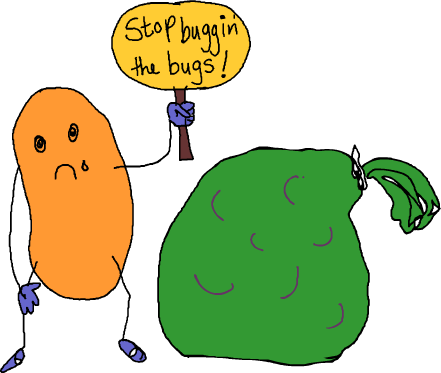Team:IBB Pune/problem the
From 2009.igem.org
(Difference between revisions)
(New page: Image:stopbuggin Synthetic biology is demanding, both for humans and the bugs.Since the first iGEM, a lot of teams have attempted at solving various problems by designing big construc...) |
|||
| (4 intermediate revisions not shown) | |||
| Line 1: | Line 1: | ||
| - | [[Image:stopbuggin]] | + | {{team:IBB_Pune/header}} |
| + | {{team:IBB_Pune/menu}} | ||
| + | |||
| + | <br> | ||
| + | <br>[[Image:stopbuggin.png|300px]] | ||
Synthetic biology is demanding, both for humans and the bugs.Since the first iGEM, a lot of teams have attempted at solving various problems by designing big constructs that simulate the problem correctly, but often don't work because of the imposed metabolic burden on the microbe. Longer construct also means difficulty to transform and sequence. How can we make these large genetic circuits more easy on the bugs? | Synthetic biology is demanding, both for humans and the bugs.Since the first iGEM, a lot of teams have attempted at solving various problems by designing big constructs that simulate the problem correctly, but often don't work because of the imposed metabolic burden on the microbe. Longer construct also means difficulty to transform and sequence. How can we make these large genetic circuits more easy on the bugs? | ||
| Line 9: | Line 13: | ||
To test the effectiveness of these approaches, | To test the effectiveness of these approaches, | ||
We have designed a construct to simulate a "unary adder-Turing machine", which is a simple three state Turing machine. Although the Unary adder is a very simple machine, the genetic construct is a whopping ~6kb chunk of DNA. | We have designed a construct to simulate a "unary adder-Turing machine", which is a simple three state Turing machine. Although the Unary adder is a very simple machine, the genetic construct is a whopping ~6kb chunk of DNA. | ||
| - | [[Image: | + | [[Image:BBa K233325.JPG|968px|center]] |
Latest revision as of 02:35, 22 October 2009

 "
"

